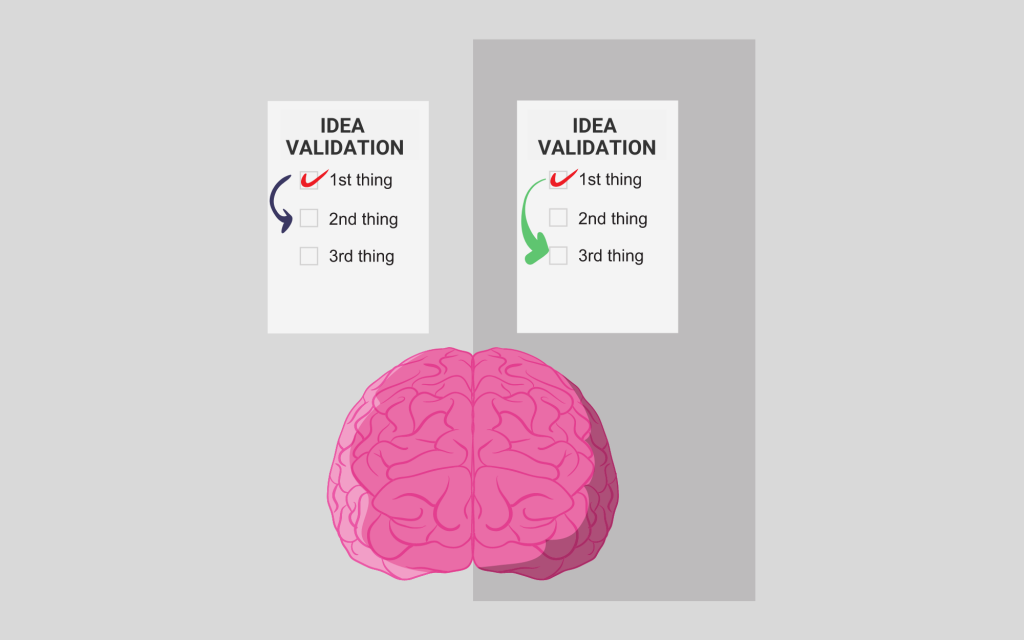
Getting a decision made to fund the next step for a new product or a new venture is usually a messy affair in most companies. Having been through my fair share of approval decisions on both sides of the fence, as the executive making the decision or the team pitching for a decision, I can see that as an industry and discipline, we product and venture folks need to get better at getting to a decision.
Companies, big and small (but mostly big), have a way of overcomplicating a decision or getting lost and diverted when a decision needs to be made on taking the next step to further fund a new idea. Decision-makers can chime in with additions and tangential thoughts. Sometimes they’ll add parameters to a variable rather than a new variable or risk that doesn’t fundamentally change whether to proceed or not.
What is needed are some key questions that, I posit, can be commonly applied across to decision making for any new product or venture. Questions that executives and teams pitching can bring people back to in order to get better, faster and more consistent decisions made (especially in Investment Committees, SteerCo’s, etc).
These 4 key questions are:
- Do we want to be in this space?
- Is this a good enough idea in the space?
- What’s the single biggest assumption that needs to be validated right now?
- Can we afford to bet on validating this assumption?
The order of the questions can be crucial. Each one builds into the next, operating like a yes ladder (if you’re pitching), or a quick filter (if you’re making the decision). That being said, with some audiences, you may want to bring the risk/bet/budget question to the top.
Let’s go through the questions themselves.
Key Questions
#1 Do we want to be in this space?
This question is about whether the new product or new venture fits with the strategy of the business. Businesses need to pick their strategy and their priorities to filter opportunities and ideas.
In many cases, this may already have been addressed prior to the decision needing to be made. For instance, the fact that you’ve been funded to research an idea and pitch means there is already a commitment to the area you are researching. In cases like this, it’s a simple yes.
In other cases, as if the idea is a new one or not within the usual strategic focus of the company, then answering this question might just need some additional discussion and thought. You will need to put some more effort into articulating this and understanding it in order to work out if it is a yes/no.
Sometimes it might be that the methods, model, new process or lessons are strategically relevant, but the customer/product/market isn’t. So work carefully on how you define “space”.
#2 Is this a good enough idea in the space?
The emphasis on a good enough idea is key. There is such high uncertainty around new products and new ventures that companies, especially big ones, will never find perfect ideas that tick all the boxes.
It’s essential to explicitly bring executives and team members together around this concept of good enough.
Good enough might be “better than the others we’ve had”. Good enough might be just enough to start building some learning momentum.
Generally speaking, new products and ventures that have made it to consideration from an executive or investment committee have been reasonably worked on and followed enough process to be good enough.
I’ve purposefully not included technical sub-questions that look at whether an idea is good like “is the market big enough?” or “who is the customer?” – because these need to have been dealt with by the team and stakeholders before it’s crunch time on a go/no-go decision. These types of questions are/can be somewhat methodical or objectively defined (e.g. we will only go after things with a market size above X).
If bad concepts are making it this far, then the process, people and practices need to be improved. A key way to know if you need to improve it is if your go/no-go or investment committee meetings are messy and distracted by technical detail style questions.

#3 What’s the single biggest assumption that needs to be validated right now?
With any new product or venture, there will be a large number of assumptions being made of varying significance. The trick for the executive or the team is surfacing the single biggest assumption that needs to be made right now.
The emphasis on “single biggest” and “right now” must be underscored and re-emphasized. You need to draw on your experience as well as the knowledge available on where to focus. For example, the somewhat standard way of thinking about product and venture lifecycle would have you consider product/market fit or validating the customer need as the first biggest assumption to resolve – because every other subsequent step in a business relies upon it being true.
A technique I’ve seen used to great effect here is argument mapping, a visual way of representing reasoning.
#4 Can we afford to bet on validating this assumption?
At the end of the day, a new product or new venture is a bet. Rather than disguise this and act with bravado thinking it will convince others of your idea, lean into the approach of Thinking in Bets to validate an assumption. This will help with thinking about the budget component of going ahead.
There are some further questions that can help you arrive at an answer to this question:
- Is this the cheapest and most effective way to validate the biggest assumption?
- If we spend this, can we afford to make follow up bets on this idea?
- If we spend this, can we afford to make bets on other ideas?
In my mind, if you’ve answered yes to all of the above then, from a portfolio/risk point of view, you have nothing to lose. Establishing this “nothing to lose” and “everything to gain” framing can sometimes be the keyframing to help an idea progress.
You need to use this approach to shift the conversation away from the more familiar “will we get a return?” type of language, especially in big companies, because the reality is new concepts will only ever give uncertain returns (that anyone can poke holes in to shoot an idea down).
Finally, if your company or executives are struggling with the word “bet” or the concept, then you have an education and cultural change to work on if you’re ever going to make real progress on new concepts.

Scott Middleton
CEO & Founder
Scott has been involved in the launch and growth of 61+ products and has published over 120 articles and videos that have been viewed over 120,000 times. Terem’s product development and strategy arm, builds and takes clients tech products to market, while the joint venture arm focuses on building tech spinouts in partnership with market leaders.
Twitter: @scottmiddleton
LinkedIn: linkedin.com/in/scottmiddleton